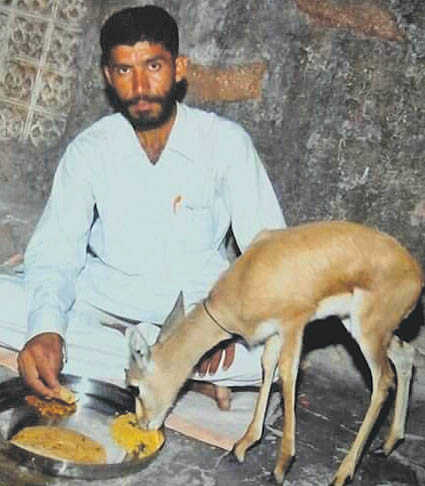In a small village Khejarli near Jodhpur (Rajasthan), the invitation to a meal is in a language understood by even deer and chinkaras: ‘avro, avro, avro!’ The antelopes will come running and gather around to partake in the food. In some cases, a woman may come forward to breastfeed an orphaned or injured fawn.
The village derives its name from Khejari tree. The protection of the tree and that of antelopes is the responsibility of the Vishnois. The legend has it that 363 Vishnois, women and children, sacrificed their lives guarding the Khejari trees from woodcutters working as per a royal decree. Each year, on the day of Dashmi of Shukla Paksha Bhadrapad (in September), the community observes “martyrs day” and renews its pledge to preserve its conventional, aesthetic and religious beliefs of not cutting a tree and save the wildlife, especially the deer and chinkara.
Elsewhere in Rajasthan, things are not as bright. The State Wild Animal Census between 2012 and 2015 shows a decline in the population of black buck (antelop cervicarpa) and the chinkara outside and inside protected sanctuaries. There are 42,864 Chinkaras and 17,697 black bucks as per the state census.
The media coverage of Salman Khan’s acquittal in the blackbuck poaching case has set the Vishnois talking: Has poaching in the state been curbed? Recently the carcasses of eight chinkaras were found hanging with ropes on a tree at Gandhialasar of Nagaur district, and the police busted a hunter gang in Churu district, recovering six deer carcasses from the smugglers’ vehicle.
Dr SM Mohnot, founder director at School of Desert Sciences, Jodhpur, says more animals were becoming poachers’ victims because of growing human interference in the range-land available for the animals’ movement. “Industrialization, public transportation and tourism near sanctuaries are responsible for the animals’ dwindling number. Plus, there are fewer convictions in poaching cases. The lack of effective enforcement of existing laws has emboldened animal smugglers,” he says.
But Vishnois are determined to protect the animals. Community members say it’s their sacred duty to follow what their forefathers promised to Shri Jambheshwar, the sect’s founder. Guru Jamheshwar of Bikaner had announced 29 camps from which the name Bishnoi is derived (‘bis’ means twenty, noi means nine). Every Vishnoi is instructed not to cut green trees, save environment and provide a common shelter to animals, specially goat, sheep and deer.
It’s the promise that played itself out in the year 1787 as per community’s folklore. Diwan Girdhar Dass, the courtier of the then King Abhaya Singh, had ordered cutting down the Khejari trees for combustible lime in Vishnoi villages where the tree grows richly an easily. As the state workers began chopping down the trees at Khejarli, a woman tied herself to a khejari tree and got her body cut into pieces by axes that struck the tree. Her three daughters, too, sacrificed their lives. The whole village was horrified. The Vishnois of nearby villages also reached there. The mindless violence continued for a second day. When the king heard about the horrible sight, he rushed to Khejarli and withdrew his orders.
Unlock Exclusive Insights with The Tribune Premium
Take your experience further with Premium access.
Thought-provoking Opinions, Expert Analysis, In-depth Insights and other Member Only Benefits
Already a Member? Sign In Now










